
Taylor joined the Tribune because she has a passion for writing and wants to bring awareness to contemporary environmental issues. She has been in journalism for three years, not including a year in the club....
Everything you need to know about the environmental “trial of the century”
October 19, 2018
Three years ago, 21 plaintiffs between the ages of 8 and 19 challenged the federal government at the federal U.S. District Court for the District of Oregon in one of the most landmark environmentalism cases of the 21st century. This October, they are finally going to trial.
Juliana v. U.S. began in August 2015 when the 21 plaintiffs filed their lawsuit against the federal government on International Youth Day. They were supported by nonprofit organizations Our Children’s Trust and Earth Guardians, as well as climate scientist Dr. James E. Hansen. Earth Guardians and Dr. Hansen are also plaintiffs in the lawsuit, with Dr. Hansen representing future generations who will be impacted by climate change.
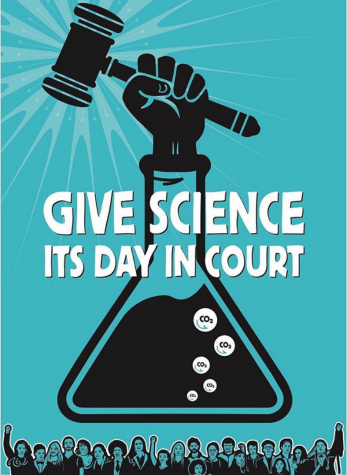
According to an official press release from the two aforementioned organizations, the youth plaintiffs urged the federal government to acknowledge its history of tolerating and encouraging harmful climate practices and to create a national plan for reducing atmospheric carbon concentrations by 2100.
“Our complaint asserts that, through the government’s affirmative actions that cause climate change, it has violated the youngest generation’s constitutional rights to life, liberty, and property, as well as failed to protect essential public trust resources,” reads the official Youth v. Gov website created for the case.
The lawsuit is particularly striking in that it marks the first time climate issues have been brought to a federal level. The youth plaintiffs’ claim raises important questions about the role of government in environmental protections.
“It is the first time a federal court has suggested that government may have a constitutional duty to combat climate change, and that individuals can sue to enforce that right,” Michael B. Gerrard of Columbia Law School said, according to the New York Times.
The youth plaintiffs of Juliana v. U.S. hail mostly from Oregon, but several come from states across the nation. Their backgrounds are diverse, but many were inspired to act when they realized how the lack of climate regulation had begun to affect their hometowns and the world around them.
“While climate change impacts the natural systems we depend
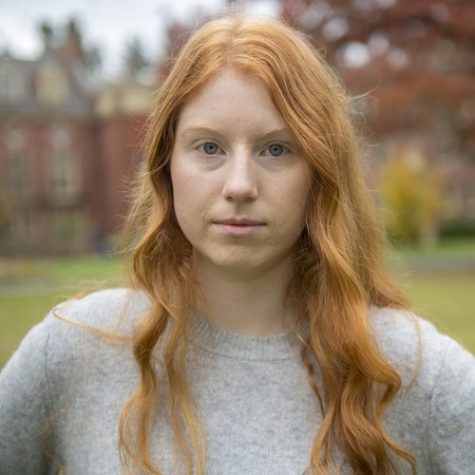
on and might enjoy spending time in, it’s not only an environmental issue. It’s a health issue, an economic issue, and a human rights issue,” said 21-year-old Tia Hatton, one of the 21 youth plaintiffs.
In Hatton’s hometown of Bend, Oregon, she first noticed the effects of warming reflected in a gradual decrease of snowpacks. Drought conditions and warming have caused wildfires in the region, worsening the air quality as well as her allergies and asthma. 11-year-old Levi Draheim — the youngest plaintiff — has seen the effects of algal blooms and rising sea levels in his hometown of Satellite Beach, Florida. 17-year-old Miko Vergun, originally from the Republic of the Marshall Islands, explained how rising sea levels exacerbated by global warming have endangered her home.
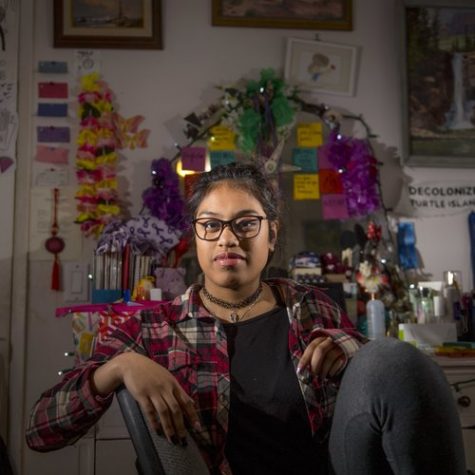
“It has been estimated that my country has 34 years until it goes underwater. And it tears me apart because I could do so much more, but I can’t by myself,” said Vergun. “The government has knowingly continued to commit to actions that directly impact places like my birth country, and it honestly depresses me. Especially when the government lawyers in court deny any responsibility they have over climate change.”
The 21 plaintiffs are united in their commitment to holding the federal government accountable for allegedly enabling and exacerbating climate change, which they believe has violated their constitutional rights and jeopardized the welfare of their homes and the world.
“Our nation’s top climate scientists, including Dr. Hansen, have found that the present CO2 level is already in the danger zone and leading to devastating disruptions of planetary systems. The current practices and policies of our federal government include sustained exploitation and consumption of fossil fuels,” 22-year-old Kelsey Juliana said, one of the leading youth plaintiffs in one of the case’s original press releases. “We brought this case because the government needs to immediately and aggressively reduce carbon emissions and stop promoting fossil fuels, which force our nation’s climate system toward irreversible impacts. If the government continues to delay urgent annual emissions reductions, my generation’s wellbeing will be inexcusably put at risk.”

An official timeline on the Youth v. Gov website and multiple press releases detail the early resistance to the lawsuit in 2015 from the federal government. Representatives of oil and gas companies, including American Fuel and Petrochemical Manufacturers, the American Petroleum Institute and the National Association of Manufacturers also joined the lawsuit as defendants. Requests to dismiss the case from both groups were denied by U.S. Magistrate Judge Thomas Coffin and U.S. District Court Judge Ann Aiken.
Eventually, Judge Coffin dismissed the industries as defendants in June, 2017 after they requested to be removed from the lawsuit. In the same year, the trial date was scheduled for Feb. 5, 2018. The Trump administration petitioned for a writ of mandamus — an order to prevent the case from proceeding — citing their belief that the district court that allowed the case to proceed “clearly erred by finding that plaintiffs adequately alleged standing based on vague and attenuated allegations of injury, causation and redressability.”
Both the plaintiffs and the District Court answered the petition, in accordance to the requests from the Ninth Circuit Court of Appeals. The original trial date was later delayed after the Trump administration’s Deputy Assistant Attorney General, Eric Grant, pushed for dismissal of the case before the Ninth Circuit Court of Appeals.
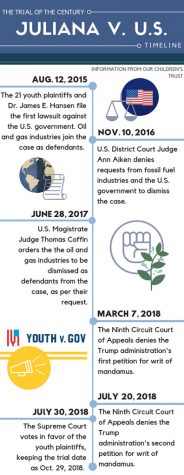 Taylor Atienza
Taylor Atienza
In July, the Trump administration’s second petition for writ of mandamus was denied by judges from the Ninth Circuit Court of Appeals. In the same month, the Supreme Court unanimously voted to keep the trial date for the youth plaintiffs as Oct. 29, 2018.
Now, nearly three years after the initial complaint was filed, the world has turned its eyes back to the 21 youths and their supporters in anticipation for what has been called the “trial of the century.”
When asked about her feelings before the trial, Hatton noted that while she was anxious, she was well-prepared to speak at the event.
“Being a part of this lawsuit has never felt more real than it does now. Getting to trial is a step many people didn’t expect us to get to; this is a huge milestone for me and my co-plaintiffs,” said Hatton. “All that being said, I am thrilled to have our day in court, and I look forward to hearing our eighteen experts testify and if needed, the plaintiffs and I are ready to be called to the stand during trial.”
According to the National Law Review, the Fifth Amendment of the Constitution is the cornerstone for the plaintiffs’ argument. Essentially, the youth plaintiffs are demanding the government recognize and uphold their right to a world that can be sustained for future generations. In the first press release from Our Children’s Trust, they allege that the federal government’s failure to address and prevent the exacerbation of climate change has violated their constitutional rights.
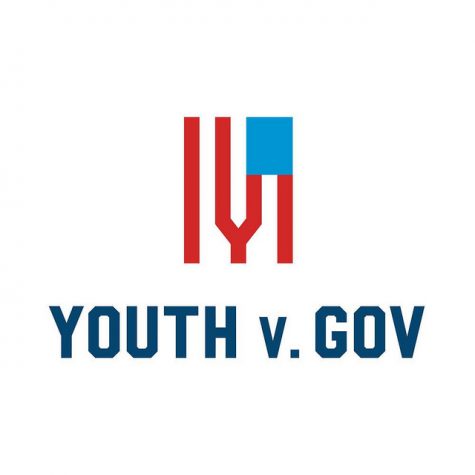
“This case is about justice and fairness, and holding our government accountable. We are asking for a concrete solution to our problems: a science based climate recovery plan,” explained Hatton. “Our case is taking on the entire system.”
However, it won’t be easy for the youths and leading attorney Julia Olson to prove that the U.S. government should be held responsible for environmental protections. While U.S. District Court Judge Ann Aiken stated that she had “no doubt that the right to a climate system capable of sustaining human life is fundamental to a free and ordered society,” representatives from the Trump Administration claimed she had falsely recognized “a never-before-recognized fundamental right to a particular climate system that lacks any support in the Constitution, this court’s precedents, or this nation’s history and tradition,” according to Bloomberg.
Indeed, there is no amendment to the Constitution that explicitly recognizes the people’s right to environmental protections against climate change. This could prove to be a major obstacle for the youth, but lead attorney Julia Olson was nevertheless assured of the validity of their argument.

“The Constitution is silent on whether there should be a fossil fuel energy system, but it speaks loudly about protecting liberty. We believe the courts will use their authority under the Constitution to protect young Americans from the climate crisis. We continue to look forward to presenting the climate science at trial in October,” Olson acknowledged in a July press release.
Part of the difficulty in determining how the court will interpret the youths’ claims is rooted in the fact that the case marks a milestone in climate policy; before Juliana v. U.S., there had not been a group that had managed to bring the issue of climate change to the federal level. However, there is still a significant possibility that the plaintiff’s urging for a national emissions plan will be recognized by the court.
“The plaintiffs were not arguing that any specific standard caused the problem about which they were complaining; instead, they were arguing that the control regime taken as a whole was insufficient to protect the plaintiffs from the constitutional harm they were alleging. The aggregate actions of the government were insufficient,” Gerald Torres, Jane M.G. Foster Professor and Faculty Fellow of the Cornell University’s Atkinson’s Center for a Sustainable Future wrote. He added, “Moreover, the government had already conceded that there was a necessity to move national policy in the direction the plaintiffs were asking but had failed to take the necessary steps to achieve that goal. Far from asking the court to fix a standard for which it was demonstrably incapable, the plaintiffs were asking the court to do something that it was uniquely capable and empowered to do.”
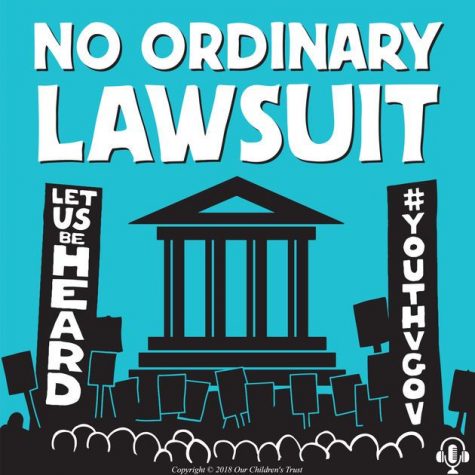
At its core, the lawsuit brings up important questions about accountability, especially when considering whether or not the federal government has any obligation to future generations in regards to creating policy to confront climate change. With the arrival of the Oct. 29 trial date, these contemporary questions will finally be answered.
“This case is for all young people and future generations that are inheriting the earth left for us,” said Hatton. “Young people have rights, and we can see the injustice in a democracy where government puts profits over our future.”
Vergun also remains optimistic about the trial. She described how she has documented droughts and king tides in her visits to the Marshall Islands and confirmed that she is prepared to testify with her experiences.
“I’m grateful that we have been given the opportunity to share our stories and our arguments in court,” said Vergun. “At this point, I’m just ready to win, because we can’t afford to lose.”

Taylor joined the Tribune because she has a passion for writing and wants to bring awareness to contemporary environmental issues. She has been in journalism for three years, not including a year in the club....